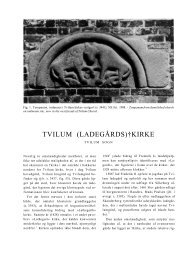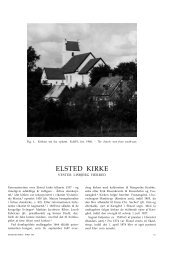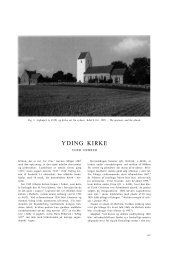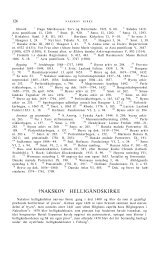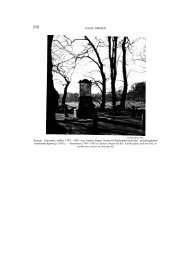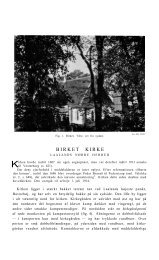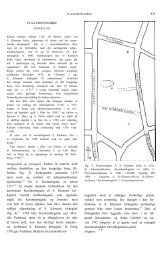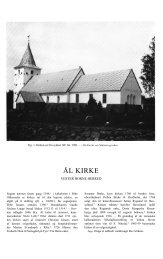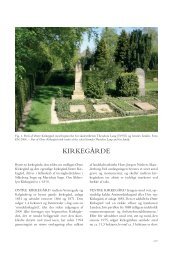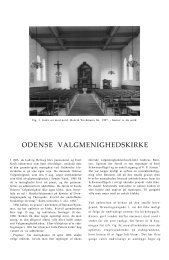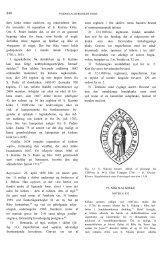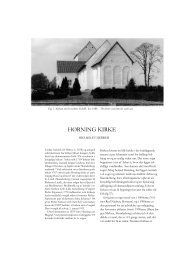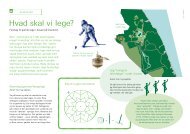Create successful ePaper yourself
Turn your PDF publications into a flip-book with our unique Google optimized e-Paper software.
Danmarks Kirker, Århus<br />
5169<br />
Fig. 132. Kirken og Tamdrup Bisgård set i landskabet fra vest. Jesper Weng fot. 2001. – The church and Tamdrup Bisgård<br />
seen in the landscape from the west.<br />
The church, situated seven kilometres north west<br />
of Horsens, was built around 1125. With its size<br />
and its wealth of treasures from the High Middle<br />
Ages, it is one of the most interesting churches<br />
in Denmark – but also one of the most enigmatic.<br />
There is regrettably little reliable historical information<br />
from the earliest period. The earliest<br />
mention of the church is in connection with<br />
a gift from an Århus canon in 1345, although<br />
the placename is mentioned as early as 1279,<br />
when the Bishop of Århus witnessed a letter in<br />
‘Thomæthorp’. It is not evident whether he did<br />
so in the large manor house of the parish, which<br />
has at least since the Late Middle Ages lain south<br />
of the church as an episcopal manor called Tamdrup<br />
Bisgård (fig. 132) (Bisgård = Bishop’s Manor).<br />
The manor may earlier have been located<br />
north west of the church site, where archaeological<br />
excavations in 198390 have demonstrated a<br />
‘large residence’ from the latter half of the eleventh<br />
century and the beginning of the twelfth<br />
centu ry. In the Late Middle Ages the advowson<br />
may have been episcopal. But the prosperous<br />
benefice, which appears to have been the seat for<br />
a very large cure, seems to a great extent to have<br />
been in the hands of placehunters with papal<br />
<strong>TAMDRUP</strong> CHURCH<br />
<strong>TAMDRUP</strong> CHURCH<br />
com missions. With the Reformation the patronage<br />
would have passed to the King, and around<br />
16751803 it belonged to the counts of Frijsenborg.<br />
The few, scattered written sources in fact offer<br />
no explanation of the existence of such a large<br />
and richly furnished basilica church (by Danish<br />
standards) in Tamdrup. The bishops are unlikely<br />
to have been the original founders. It is more<br />
likely to have been a Royal foundation, and may<br />
be considerably older than the present church<br />
and have served as a kind of minster or missionizing<br />
church. In that case there would be a<br />
clear parallel with the more southerly ancient<br />
Royal seat in Jelling, where King Harald Bluetooth<br />
marked the christianization of the country<br />
with his large runic stone and the building of a<br />
substantial minster church of wood.<br />
These conjectures draw particular support from<br />
the representations on the *(†)golden altar of the<br />
church from c. 1200 (cf. pp. 5113ff.). Seven of<br />
the pa nels are depictions of how the cleric Poppo<br />
(or ‘Poppa’) converted King Harald Bluetooth c.<br />
958/65 by undergoing the ordeal by fire, as recounted<br />
a few years later in the chronicle of the<br />
Saxon monk Widukind (figs. 8894). The story<br />
326




